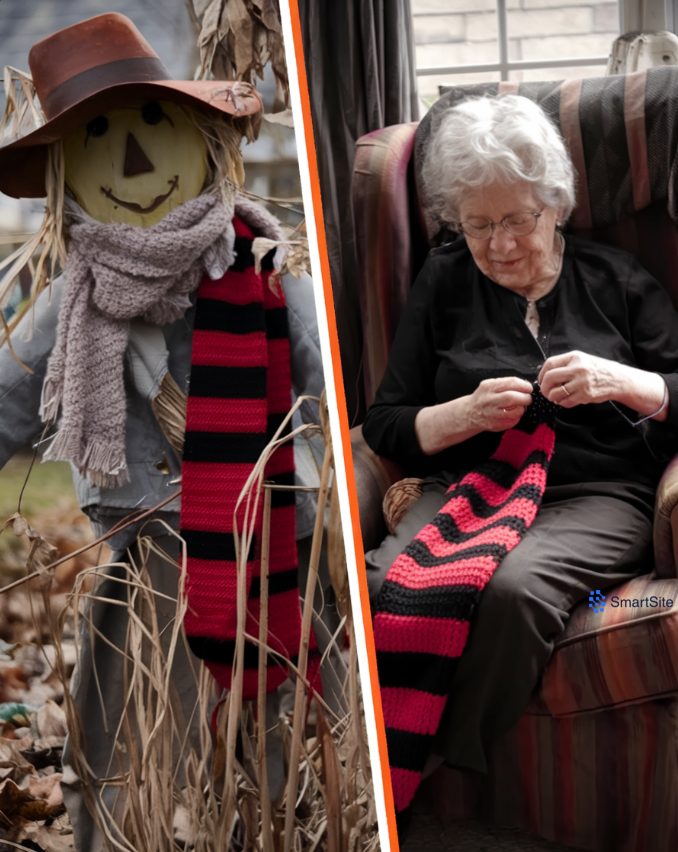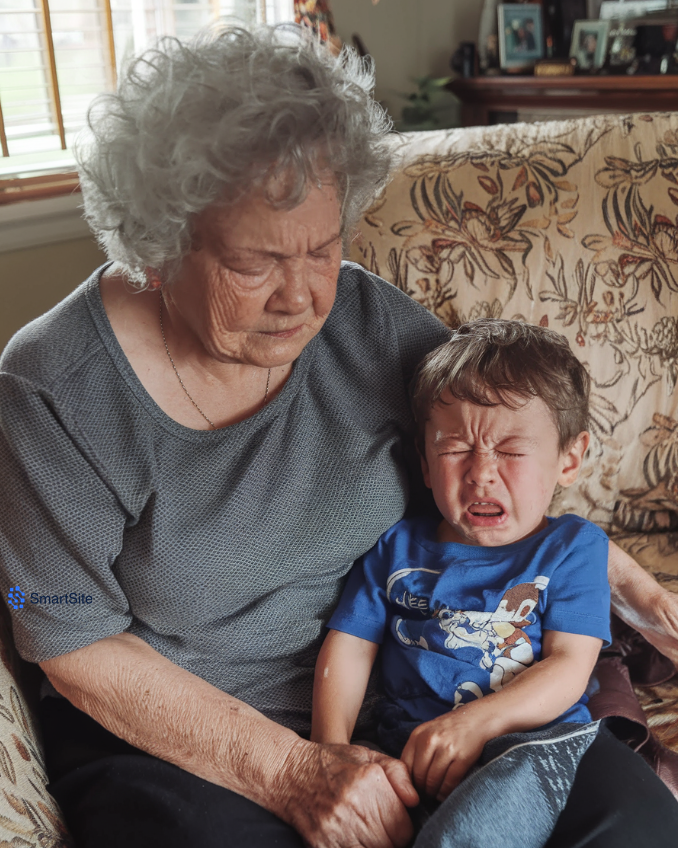My Wife Found the Clothes She Knitted on a Scarecrow – I Turned It Into a Lesson

When my wife saw the scarves she had lovingly knitted for our son draped around a scarecrow in his yard, her heartbreak was undeniable. I couldn’t just let it slide, so I came up with a plan that would turn this painful moment into something meaningful for all of us.
It was a calm, sunny afternoon, and my wife Lauren and I were on our usual walk, chatting about nothing in particular. The air was warm, filled with the smell of freshly cut grass, and everything felt peaceful—until we passed our son’s house.
Lauren suddenly stopped in her tracks. I followed her gaze and saw it: a scarecrow standing in the middle of the yard. But it wasn’t the scarecrow itself that stopped her. It was the scarves wrapped around its neck and arms—scarves she had spent countless hours knitting for our son and his wife.
My heart sank. The scarves, once made with so much love, were now carelessly draped on a scarecrow, left outside like they meant nothing.
“Those are the scarves you made,” I said softly, unsure of what else to say.
She nodded, her eyes brimming with tears. “I guess they didn’t need them.”
Her voice was small, as if she was trying to convince herself that it didn’t hurt. But I knew it did. I still remembered the hours she had spent knitting each one, carefully picking colors for our son Johnny and his wife Emma. Lauren had been so excited to give them those scarves for Christmas, wrapping them up with ribbons and anticipation. The memory of her glowing face as she handed them the gifts played in my mind.
Johnny had given her a quick hug and said, “Thanks, Mom, they’re nice.” Emma had smiled politely, saying the same. They seemed distracted, but Lauren didn’t notice. She was happy just to hear their thanks.
Now, standing in front of that scarecrow, I could see her heart breaking again. “It’s okay… they probably didn’t like them anyway,” she muttered, blinking back tears. But I knew that wasn’t true. They weren’t just scarves; they were symbols of her love and effort.
“Do you want to say something?” I asked, knowing full well that she wouldn’t. She shook her head. “No, let’s just go home.”
We walked back in silence. The sunshine that had felt warm earlier now seemed glaring, and the air felt thick with unspoken hurt. I wanted to do something, anything, to fix it. But I didn’t know what. Confronting Johnny and Emma would embarrass Lauren, and she was far too kind-hearted to want to cause any tension.
That night, I couldn’t stop thinking about her face when she saw those scarves. I knew I had to act. The next day, I called Emma.
“Hi, Emma,” I said, trying to keep my voice steady. “I noticed the scarves Lauren made… they’re on the scarecrow. Why is that?”
There was a pause, and then she laughed lightly. “Oh, those? They’re kind of out of style, but they’re fine for the scarecrow.”
I could feel my anger rising. “Out of style? Do you know how much time and love Lauren put into those?”
“They’re just scarves,” she replied, sounding slightly annoyed. “What’s the big deal?”
The big deal was that those scarves weren’t just wool—they were pieces of my wife’s heart. But I knew yelling wouldn’t change anything. “Never mind,” I said, hanging up, my frustration boiling over.
For days, I replayed that conversation in my head. I wanted to confront our son, but I knew it would only make things worse. Then, I had an idea—a way to turn this hurt into something positive.
The next Friday, when we went over for dinner, I arrived early. “I’ll keep the kids entertained while you cook,” I told Emma. She seemed a little surprised but didn’t argue.
I gathered the grandkids and led them outside. “How about we do something fun? Let’s make a whole family of scarecrows!”
Their eyes lit up, and soon we were raiding the house for old clothes, hats, and anything else we could use. As we built the scarecrows, I told them how their grandma had made the scarves with love, explaining that they were more than just pieces of clothing. “These scarves are special,” I said. “They were made just for you.”
The kids listened closely, and I felt a glimmer of hope. Maybe they didn’t fully understand yet, but at least they were hearing the message.
When Lauren arrived later with a freshly baked pie, she looked puzzled at the sight of the scarecrow family standing proudly in the yard, each one wearing one of her scarves. Her eyes softened as she walked over and gently touched one of the scarves. “Oh my,” she whispered, her voice thick with emotion. “You all made these?”
“With a little help from the grandkids,” I said, smiling at her.
She blinked back tears, laughing softly. “I thought you’d thrown them away,” she admitted. “Can you believe I was upset over something so silly?”
From the corner of my eye, I saw Emma, pale and quiet, clearly realizing her mistake. “They’re beautiful,” she said quietly. “The kids must’ve had fun.”
Dinner that night felt lighter, warmer. The tension that had built up between us seemed to ease. As we were leaving, Emma pulled Lauren aside and apologized. “I didn’t realize how much those scarves meant to you.”
Lauren smiled and patted her on the arm. “It’s okay. Just… remember next time, alright?”
The next week, as we passed Johnny’s house on our walk, we saw the scarecrows still standing in the yard, the scarves fluttering gently in the breeze. Lauren stopped again, but this time she smiled. “You know, they look kind of nice there,” she said, squeezing my hand.
I nodded, feeling at peace. “Yeah, they do.”
And with that, we continued our walk, leaving the scarecrow family behind—a symbol of love, forgiveness, and the simple power of family.
Continue Reading On Next Page...
